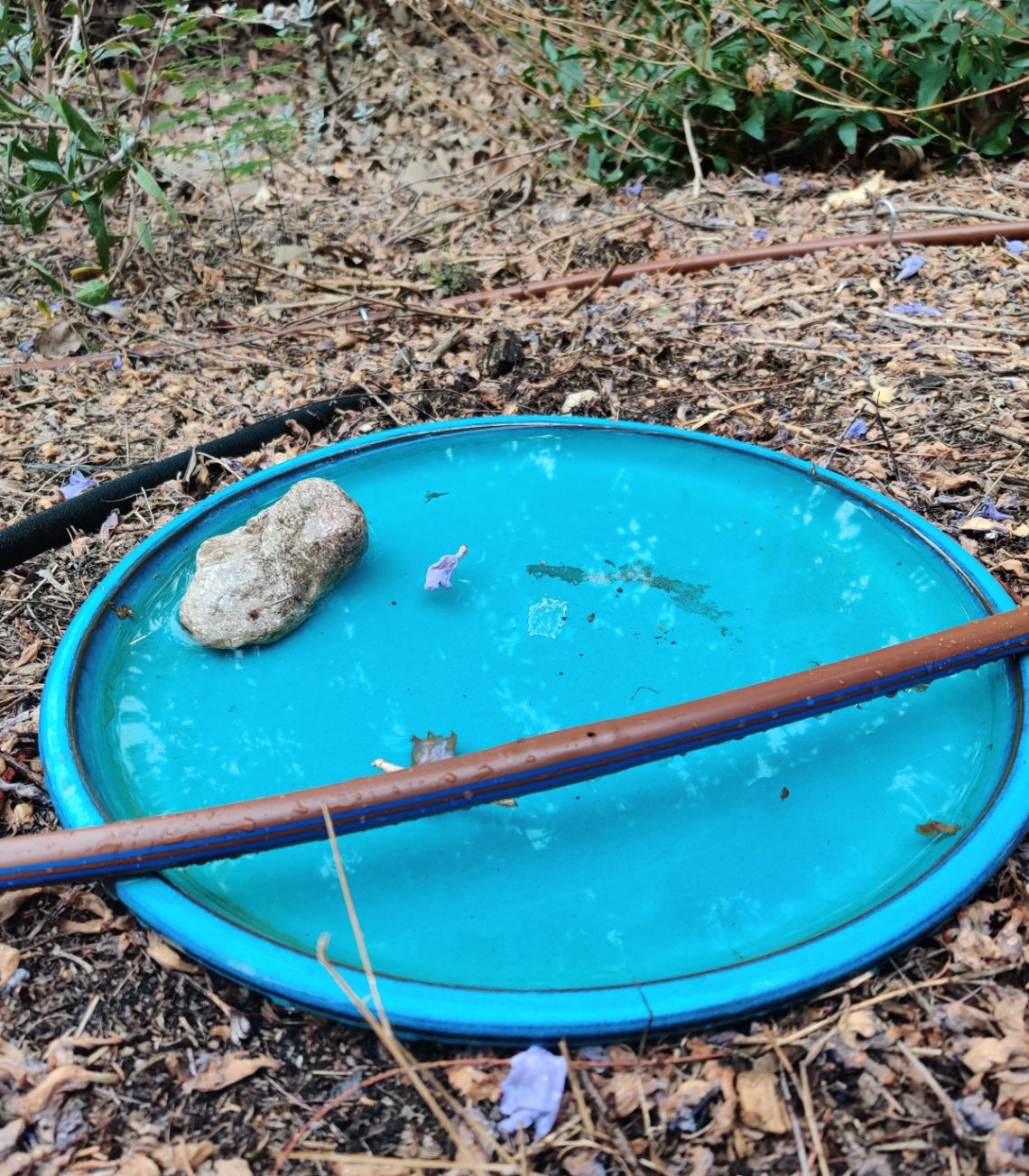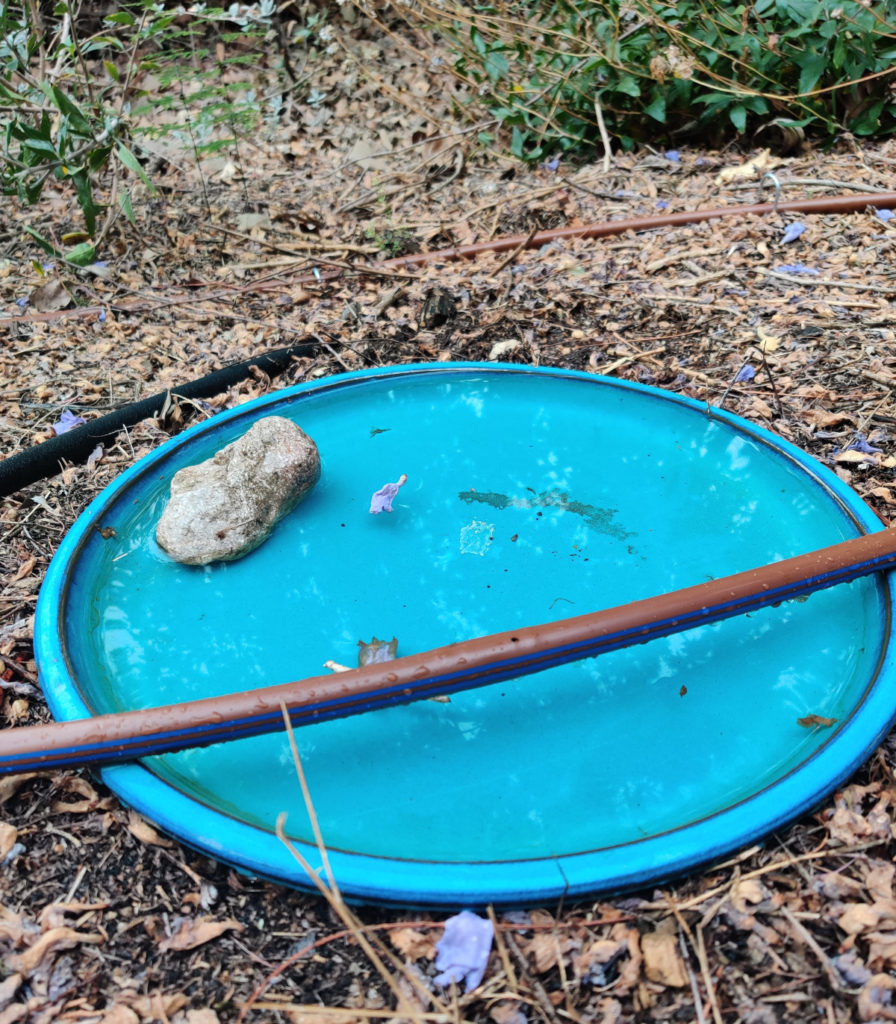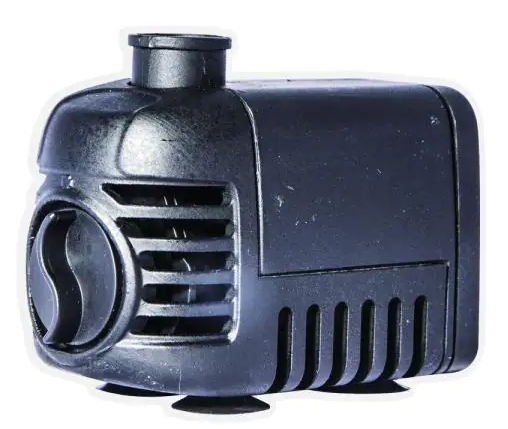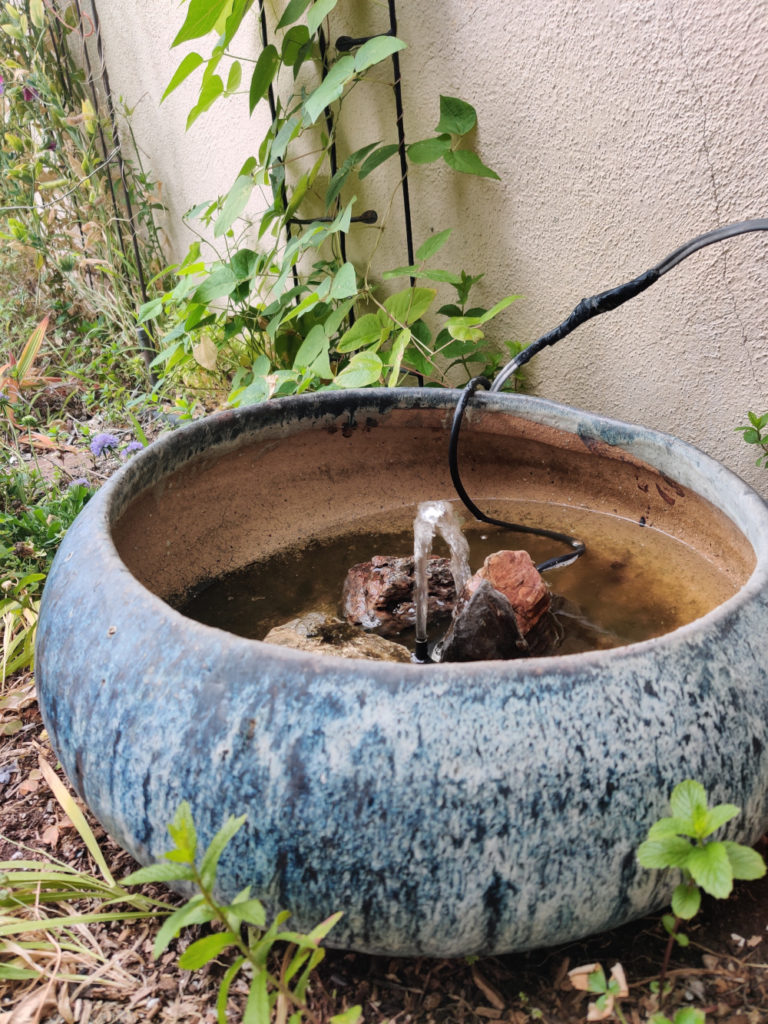
Water for the birds
As we enter this dry, dry summer, humans aren’t the only ones short of water. In my Backyard Wildlife Habitat, my bird, butterfly, lizard, and insect friends need water too.
I offer 3 water sources on my property. Two of these are large saucers. The third is a fountain.
I’ve studied birdwatching sites, and it seems that the best offering would be a bubbling rock style of fountain. Birds would be attracted by the water sound, and the way the water flows down those rocks offers tiny shallow pools for the critters to access the water. I don’t have one of these.
Next best thing is DIY …
Simple saucer bird-waterers
I acquired two large ceramic saucers at garden supply stores. My saucers are 15-20″ wide, and they’re rather shallow. Birdwatching sites say you want the water to be 1″ deep, not more than that. The same sites also caution you to choose light colors, so that the saucer doesn’t get too hot.
Next, I had to choose a site where I would place them. Here, my research proved inconclusive. Some sites said shade, close to shrubs that offered cover so that the birds could hide quickly. Other sites said to place the saucer in an open space. I’m trying one in each, to see which gets more action.
I placed a rock or two in each saucer, so that birds would have a place to perch. If you’re trying to attract butterflies, fill the saucer with small pebbles, or even coarse sand, up to the level of the water.
I had access to drip hose in these areas, so I placed each saucer under one drip emitter. I’m experimenting with whether the drip emitters might help keep the saucers full. The drip-emitter-refill is not a replacement for maintenance — periodically I have to clean out the saucers to remove leaves and plant debris.

DIY fountain
Some years back, I yearned for a garden fountain, but most were cost-prohibitive. So I bootlegged one on my own.
At the nursery supply store, I selected a large ceramic bowl, one with no hole in the bottom. Mine’s pretty colors that make me happy.
At the big box store, I bought a cheap fountain pump. In the old days these ran $12-$15. In 2022, they’re closer to $20-25. My fountain pump looks like this, the smallest g.p.h. flow available … they seem to last about 2-3 years if you take care of them.

My fountain pump is held upright by a few strategically placed rocks inside the bowl. The fountain pump’s cord simply runs up and over the side of the bowl, nothing fancy, nothing disguised.
Water in my fountain is usually about 3-4″ deep, which is much deeper than birdwatching sites recommend. If you’re striving just for birds, you’ll need more rocks than I have. My initial goals with this fountain were to get “fountain sounds” into my garden atmosphere.
You’ll need to monitor your fountain to make sure the pump isn’t pumping water up and out of the dish. Sometimes it can get knocked sideways, or a piece of debris might cause this. You don’t want your pump ending up dry and “pumping” air — that’s how you burn out pumps.
Periodically you need to take the whole thing apart to scrub out algae. I do not use any chemical cleansers to prevent algae growth. While your fountain is taken apart, be sure to squirt fresh water through the “gills” of your pump to remove any algae that is inside.
I’ve planted moderate-water needs plants around my fountain (as contrasted with the drought-tolerant plants in most other spaces in my garden). That way, when I dump the fountain for cleaning, the plants benefit.
I’ve had this little fountain set up for several years, and did not get birdy visitors. I think this was due to a combination of * water level being deep inside the lip of the saucer so that birds had to go down inside the saucer, which might have felt threatening, * water being too deep, and * dog in the backyard.
This dry, dry year, I have noticed plenty of birdy visitors. Nothing has changed in my setup, so what that tells me is that our wildlife is getting more desperate. They need our help. They need water sources.

